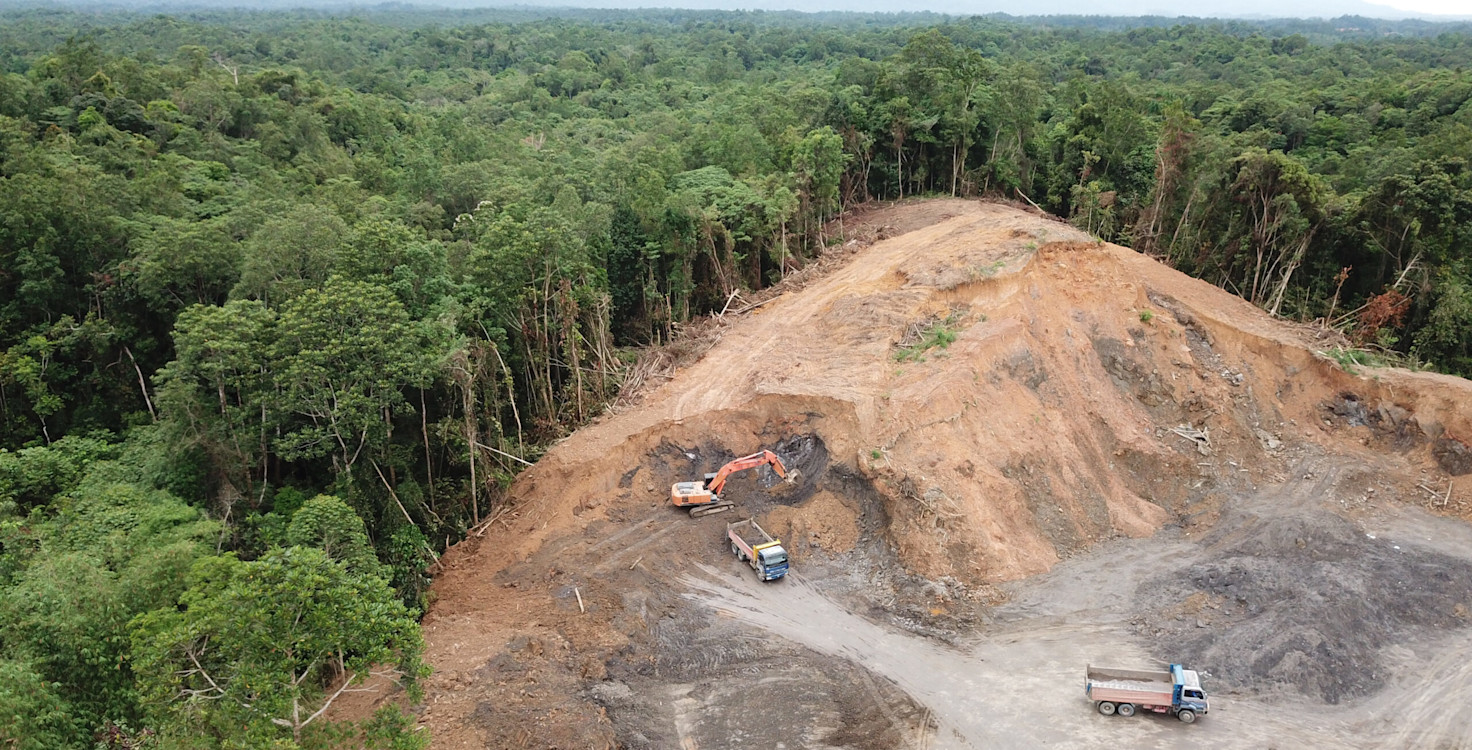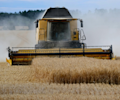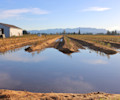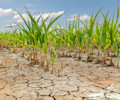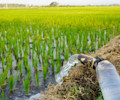Nature loss is an important material issue that finds itself increasingly at the top of the agenda for investors. After all, nature is the bedrock of the global economy, with nearly $44 trillion dollars of economic value generation (over half the world’s total GDP) being moderately or highly dependent on nature and its services, such as clean air and pollination. Biodiversity, however, is in decline and many species face the risk of extinction. In fact, scientists have said that we are living through the “sixth mass extinction” in Earth’s history.
This year, after several delays due to the pandemic, the UN biodiversity negotiations are finally underway. Hosted by China, these talks are set to culminate in a new global biodiversity framework, with governments setting targets to repurpose incentives that are harmful for biodiversity, which will protect at least 30% of global land and sea.
Planetary Boundaries and Agricultural Production: Mapping the Linkages
Agricultural production plays a distinct role in biodiversity loss and other planetary boundaries. Planetary boundaries are boundaries within which humanity can continue to develop and thrive for generations to come, but crossing them increases the risk of generating large-scale abrupt or irreversible changes. The table below shows six of the planetary boundaries that have links to agriculture, with many of these linked specifically to protein production.
Planetary Boundary | Link to Agriculture | Link to Protein Production | Risk Factor |
|---|---|---|---|
Freshwater | Agriculture accounts for 92% of humanity’s water footprint. | Almost 1/3 of humanity’s water footprint relates to animal protein production. | Water Scarcity & Use |
Land System Change | Agriculture uses half of the world’s habitable land. | Livestock accounts for 77% of all agricultural land use. Cattle is the leading commodity responsible for global deforestation, with soy coming third. | Deforestation & Biodiversity |
Biochemical Flows | Around 50% of nitrogen used in agricultural production in Europe is lost to the environment. | Nutrient pollution from livestock operations is cited as one of the leading causes of hypoxic ocean dead zones. | Waste & Pollution |
Climate Change | Food systems account to around 1/3 of total GHG emissions. | Livestock accounts for 14.5% of anthropogenic GHG emissions and over 30% of human-caused methane emissions. | GHG Emissions |
Biosphere Integrity | Agriculture is the leading threat to 86% of species at risk of extinction. 18-30% of global agriculture is below a lower limit for biosphere integrity. | The planet’s previously diverse animal population has largely been replaced with farmed livestock, with farmed chickens accounting for 57% of all bird species by mass. | N/A |
Chemical Pollution and Novel Entities | Excessive use of pesticides is an important contributor to decreasing populations of birds, insects, etc. | Half of the highly hazardous pesticides sold in 2018 were sprayed on just two crops: soya beans and maize, and around 75% of the world’s soya and maize production ends up as animal feed for the meat industry. | N/A |
What Are the Implications of the Global Biodiversity Framework for Investors?
Target | Global Biodiversity Framework Targets | Implications for Investors |
|---|---|---|
Target 1 | Existing intact and wilderness areas will be preserved (no net land expansion) | – No net expansion means that agricultural investments that are based on land use expansion or deforestation will incur significant risks. |
Target 3 | At least 30% globally of land and of sea conserved and protected | – Protected areas will have implications for investments in those areas. - Investors can implement safeguards to avoid investments that negatively impact protected areas. |
Target 7 | Reduce nutrients loss by at least half, pesticides by at least two thirds, and eliminate the discharge of plastic waste | – Investors can engage with companies on biodiversity-specific issues like pollution, nutrient loading – Encourage innovation in nutrient application (e.g., precision farming, use of natural capital solutions) |
Target 8 | Use ecosystem-based approaches to contribute at least 10 GtCO2e/year to climate mitigation | – Investors can invest in nature-based solutions for climate (e.g., above and below ground carbon capture through conservation) – Align portfolios with both climate and nature goals |
Target 10 | Ensure all areas under agriculture, aquaculture and forestry are managed sustainably | – Engage with investee companies and in shareholder resolutions encouraging agroecology, regenerative agriculture, agroforestry, no-till, precision agriculture or tools that allow producers to bend the curve on environmental outcomes. |
Target 15 | All businesses are expected to (i) assess and report on their dependencies and impacts on biodiversity, (ii) reduce negative impacts by at least half; (iii) increase positive impacts. | – Engage with companies and policymakers to encourage the measurement and disclosure of data on biodiversity impacts. – Quantify and disclose nature-related financial risk (e.g., by using TCFD) |
Target 18 | At least $500 billion of harmful subsidies annually to be redirected, repurpose, or eliminated by 2030 | – Well-oriented subsidies can help reduce ESG risk for investors – Investors could support the repurposing of subsidies that harm biodiversity (e.g., contributing to investor statements like the 2021 statement to reform the EU CAP) |
Target 19 | Increase financial resources from all sources to at least $200 billion/year, including new, additional and effective financial resources, increasing by at least $10 billion per year… leveraging private finance | – Investors could engage in nature-positive blended finance instruments for the protection of nature. |
As noted in a recent report by the Network for Greening the Financial System (NGFS), the transition towards a nature-positive economy brings multiple benefits, but could trigger transition risks if the portfolio allocations and strategies of financial institutions are not aligned with forthcoming policy developments. As shown in the table above, which is a non-exhaustive list, several Global Biodiversity Framework targets have implications for investors in terms of creating transition risk and opportunities to support the transition towards a nature-positive economy.
New policies and regulations are set to be adopted to address the issues surrounding biodiversity, such as the deforestation commitments made at COP26 and the launch of the Taskforce on Nature-related Financial Disclosures (TNFD). As the nature equivalent to the Task Force on Climate-related Financial Disclosures (TCFD), the TNFD is set to enhance the disclosure of nature-related risks for investors, thus marking an important step to incorporate nature-related risks in financial decision-making, which has already been endorsed by the G7 and the G20. The TNFD is also expected to integrate the concept of ‘double materiality’ more into its work than the TCFD as organisations will disclose how nature is impacting them, and how organisations impact nature.
This year, the FAIRR Initiative will be carrying out additional research on the topic, led by Max Boucher, Senior Manager, Research & Engagements. Our work has already highlighted that waste and pollution from intensive animal agriculture is a major ESG issue that could be made worse by solutions that focus exclusively on climate rather than nature as a whole. The Coller FAIRR Protein Producer Index, moreover, shows that the Waste & Pollution is the second-worst performing risk factor after Water Use & Scarcity. Our data also shows that over 70% of leading protein producers are at a high risk of deforestation. Since many of our nature-related indicators show poor performance, this further highlights the importance of better disclosure to address nature-related risks and drive change. Still, our work will focus on solutions that help mitigate those risks while capitalising on opportunities, such as the rapid shift of global food companies towards supporting regenerative agricultural practices.
For further information about the FAIRR Initiative’s upcoming biodiversity engagement, please get in touch with the FAIRR Initiative’s biodiversity lead, Max Boucher. The blog benefitted from the support of Francisco Botero.
FAIRR insights are written by FAIRR team members and occasionally co-authored with guest contributors. The authors write in their individual capacity and do not necessarily represent the FAIRR view.
